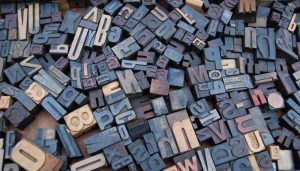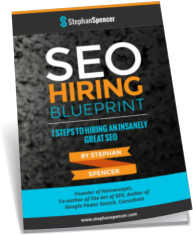It’s hard to overestimate the value of a good headline. People might complain about “clickbait”, and sometimes their complaints are justified. But let’s face it, without a compelling reason to click, there’s no way you would have ever found that amazing article that made you laugh, taught you an important lesson, or revealed an amazing fact.
Despite the objections, the fact remains that in a sea of samey-sounding content, a truly remarkable headline is the one chance you’ve got to reel people in and get them to dedicate five minutes of their lives to whatever it is you want to tell them.
There’s no excuse for writing misleading or unnecessarily outrageous headlines, but without a hook that inspires emotion, sparks intrigue, or delights and surprises, frankly, your content is dead in the water.
So what makes a compelling headline?
We now have numerous studies that tell us what works and what doesn’t. Data analyzed by sites like Buzzsumo and Moz have revealed some incredibly granular detail about the anatomy of a good headline.
Don’t be fooled into thinking there’s a simple formula–there isn’t. Crafting a click-worthy headline still takes skill and creativity. However, by analyzing the data behind the best performing headlines, you can increase your chances of success.
Here are a few handy science-backed tips.
Longer Headlines Perform Better
Let’s start with the perfect length for a headline. You might assume that a shorter is better, since you only have a few seconds to grab the reader’s attention.
In fact, the opposite is true.
In Buzzsumo’s study of over 100 million headlines, they found that posts with 12 to 18 words in the headline performed best on Facebook. The same study found that headlines of 80-95 characters had the highest engagement.
Don’t be afraid to stretch out and reveal important details in your headlines.
Avoid Ambiguity and Be Explicit
It might seem counterintuitive that longer headlines perform better, but there’s a good reason for it: clarity. According to Moz’s study, ambiguity in headlines is bad. It turns out people want to know exactly what they are clicking on before they click on it. Shorter headlines that give too little information or headlines that create confusion are a risky proposition for busy readers, and likely to be skipped.
Again, this is probably due to the sheer volume of information available online. Why would I waste my time clicking on something I’m unsure about when there are so many other articles promising to give me exactly what I want?
Use Emotional Phrases
It turns out that readers not only want to know what they are getting before they click, they also want to know how it will affect them. In Buzzsumo’s study, the phrase “will make you” was far and away the biggest driver of clicks and engagement among all the three-letter phrases they analyzed. This explains the popularity of Buzzfeed headlines like “27 Confusing Photos Which Will Make You Cringe, Then Laugh”.
The key here is that you’re telling the reader exactly why they should care, and explaining what they might get out of the article. The study also found that emotional phrases like “melt your heart”, “tears of joy”, and “make you cry” drove engagement.
While these exact phrases might not work in your particular niche, it is advisable to include emotional elements in your headlines when you can.
Start With a Number—But Don’t End With a Question
According to both the Moz study and the Buzzsumo study, headlines that begin with a number generally perform well, with Buzzsumo finding that 10, 5, and 15 were the top performing numbers in that order. Interestingly, number headlines also seem to perform slightly better with females than males.
Phrasing your headline as a question is not advisable according the Moz study, where questions performed poorly. It’s difficult to know why exactly this is, but it could be that a question introduces an element of ambiguity or uncertainty when readers are looking for answers and clarity.
It’s All or Nothing With Superlatives
In 2019, it’s almost a cliche that clickbait headlines overuse superlatives like “best”, “biggest”, “craziest”, and “cutest”. This might not actually be a bad thing. According to the Moz study, headlines that were packed with superlatives did quite well. What performed even better, however, was understated headlines.
The kiss of death with superlatives seems to be aiming for the middle ground. The lesson here is if you really did write the biggest, best, most amazing article on the topic, don’t be afraid to go crazy and tell people in the headline. If not, avoid the use of superlatives.
For more great marketing tips, tune in to the Marketing Speak podcast.
Photo by Amador Loureiro from Unsplash


 SIGN UP FOR EXCLUSIVE WEEKLY CONTENT
SIGN UP FOR EXCLUSIVE WEEKLY CONTENT 


Leave a Reply